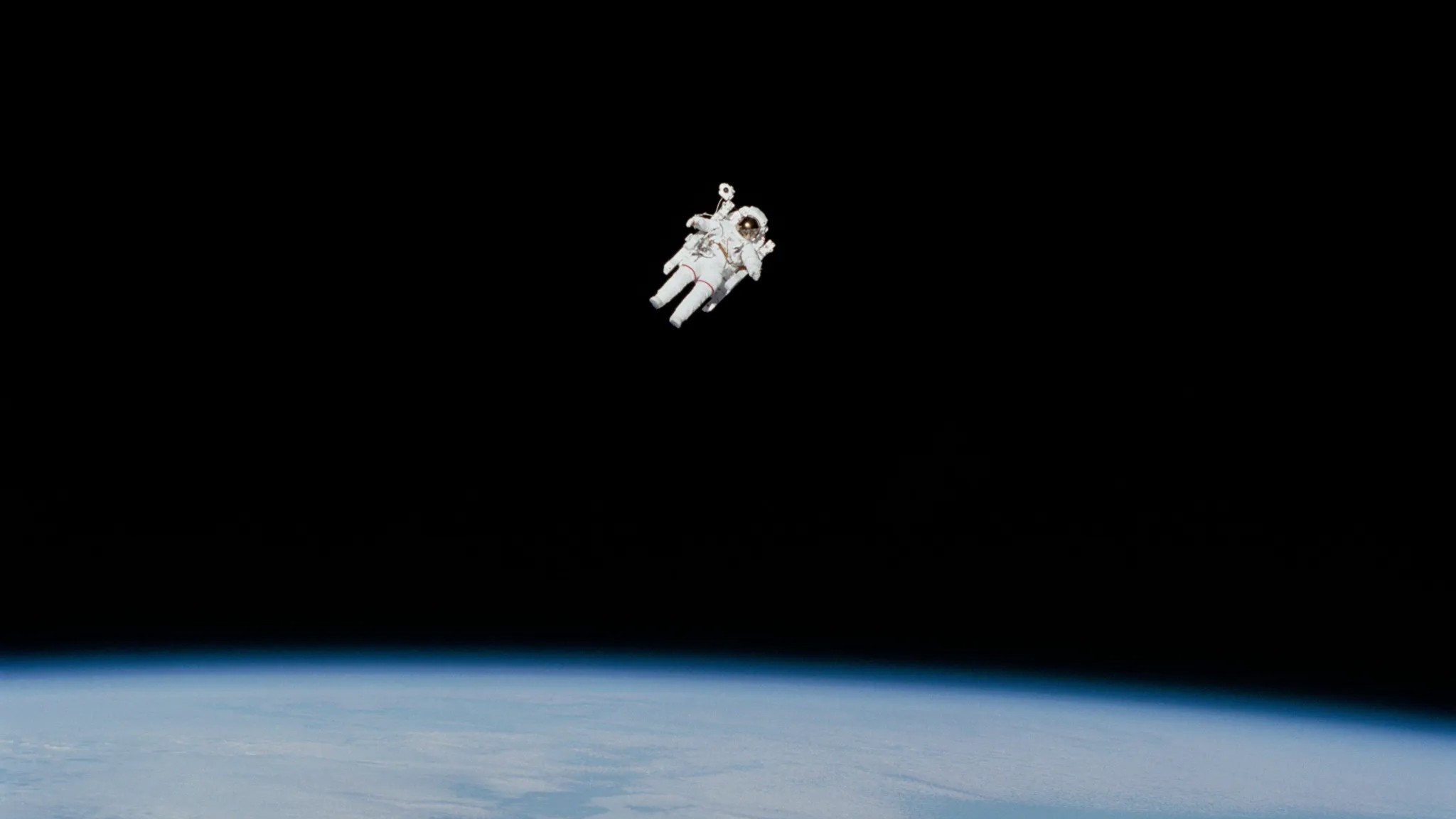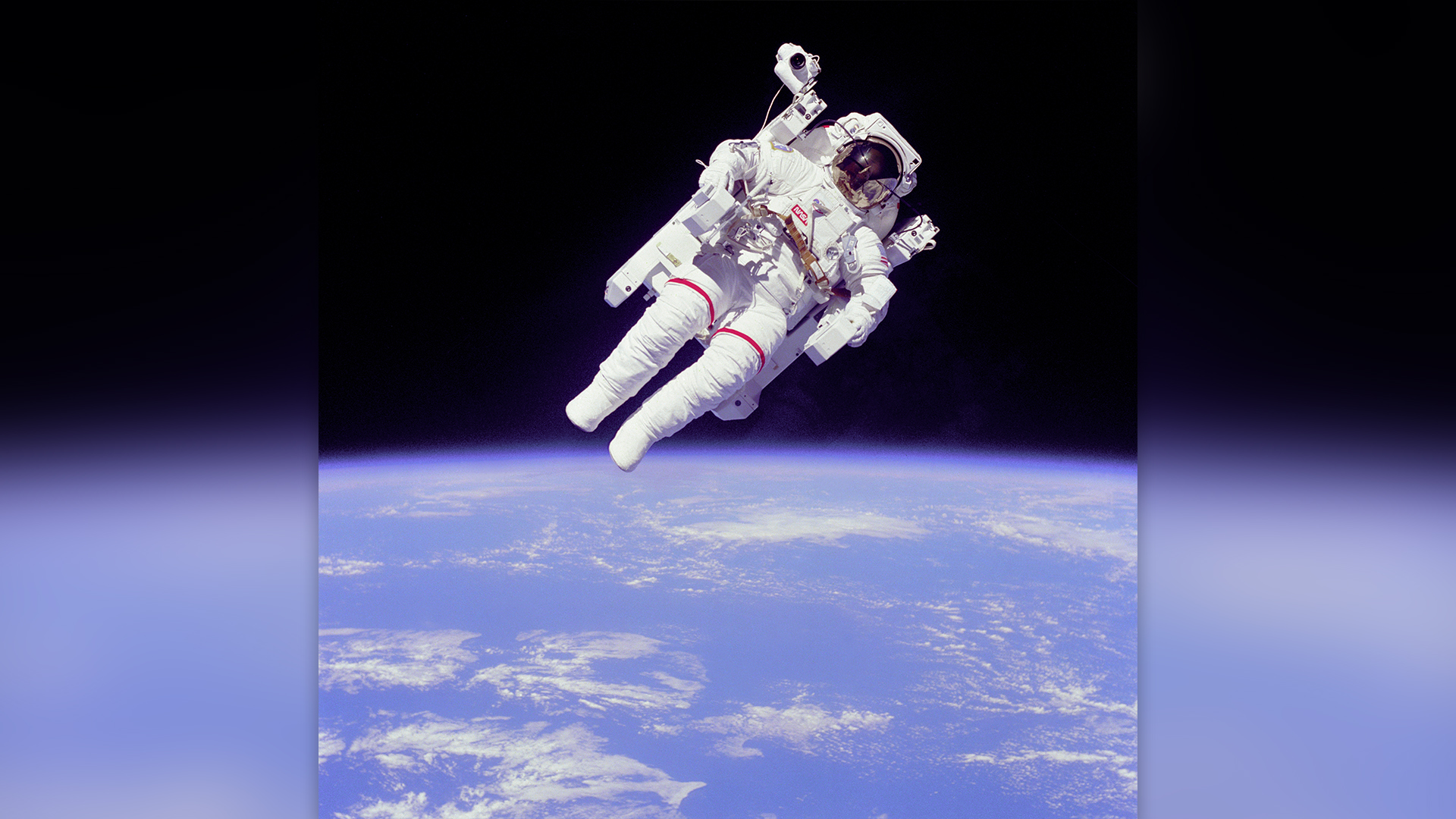Space photo of the week: Bruce McCandless II floats untethered as the 1st 'human satellite' in history
Forty years ago this week, the first untethered spacewalk resulted in one of space exploration's most iconic images.

Who it is: Bruce McCandless II, a NASA astronaut, testing the Manned Maneuvering Unit (MMU) during space shuttle mission STS-41-B
When it was taken: Feb. 7, 1984
Where it is: Low Earth orbit
Why it's so special: This week is the 40th anniversary of the first untethered spacewalk. On Feb. 7, 1984, NASA astronaut Bruce McCandless II strapped on a hand-controlled backpack and, propelled by its nitrogen gas thrusters, flew out of the space shuttle Challenger payload bay. He got to about 320 feet (98 meters) from the spacecraft, becoming the first human to attempt a spacewalk without a safety tether. McCandless orbited Earth — as the first human satellite — for 1 hour, 22 minutes.
The moment was immortalized by Robert "Hoot" Gibson, Challenger's pilot. He used a Hasselblad camera to capture McCandless flying solo high above Earth. The images became arguably the most iconic of the entire space shuttle program.
Related: 15 jaw-dropping spacewalk images

Although the images were unplanned, Gibson knew instantly that they would be iconic, so he took three light-meter readings and checked the focus four times for each photograph, according to NASA. He even tilted the camera to make sure the horizon was level in the images.
Sign up for the Live Science daily newsletter now
Get the world’s most fascinating discoveries delivered straight to your inbox.
"It may have been one small step for Neil," McCandless said as he orbited Earth solo, "but it's a heck of a big leap for me." (His quip, of course, referenced Neil Armstrong's famous line, "That's one small step for a man, one giant leap for mankind," when taking the first human step on the moon 15 years earlier.)
Fittingly, McCandless served as the voice of NASA's Mission Control during 1969's Apollo 11 and 1971's Apollo 14 missions. His second and final spaceflight was in April 1990 on the STS-31 mission to deploy the Hubble Space Telescope into Earth's orbit from the space shuttle Discovery cargo bay. He died in 2017, at age 80. His backpack, the MMU, is on display at the National Air and Space Museum's Steven F. Udvar-Hazy Center in Chantilly, Virginia. The MMU was used during three missions in 1984 before being retired for safety reasons.

Jamie Carter is a freelance journalist and regular Live Science contributor based in Cardiff, U.K. He is the author of A Stargazing Program For Beginners and lectures on astronomy and the natural world. Jamie regularly writes for Space.com, TechRadar.com, Forbes Science, BBC Wildlife magazine and Scientific American, and many others. He edits WhenIsTheNextEclipse.com.










